Software Selection
In the digital world, choosing the right software is crucial. Our experts analyze your needs, compare them with the best software solutions and give you tailored recommendations. Rely on our expertise and industry knowledge to shape your digital future.

The right software as key to corporate success
With valantic, you navigate through the technology jungle to customized solutions
Choosing the right software is crucial to the success of our customers. At a time when digital transformation is not just a buzzword but a necessity, the right software solution is at the heart of every business. It enables efficiency gains, cost reductions and better customer retention. However, the market is flooded with vendors and options, making selection a challenge.
In many ways, software selection projects are more complex than they appear at first glance. In addition to changing processes and functionalities, it is important to keep an eye on the overall architecture. This is because application architectures consist of an ERP platform / ERP core as well as connected add-ons and (external) peripheral systems.
These are connected to the respective system – and in some cases to each other – via interfaces and therefore form a complex technological basis for mapping strategic and operational business processes. IT architecture issues are therefore of crucial and future-oriented importance from several perspectives:
- Strategic: Should the products also be sold via the company’s own (B2B) web store in future? Is (further) expansion into new markets planned?
- Functional: Which functions should be provided centrally via the ERP and which should be outsourced? Is automation or outsourcing of the warehouse being considered?
- Technical: Where should the ERP or peripheral systems be hosted in the future? Is central middleware required to connect the systems?
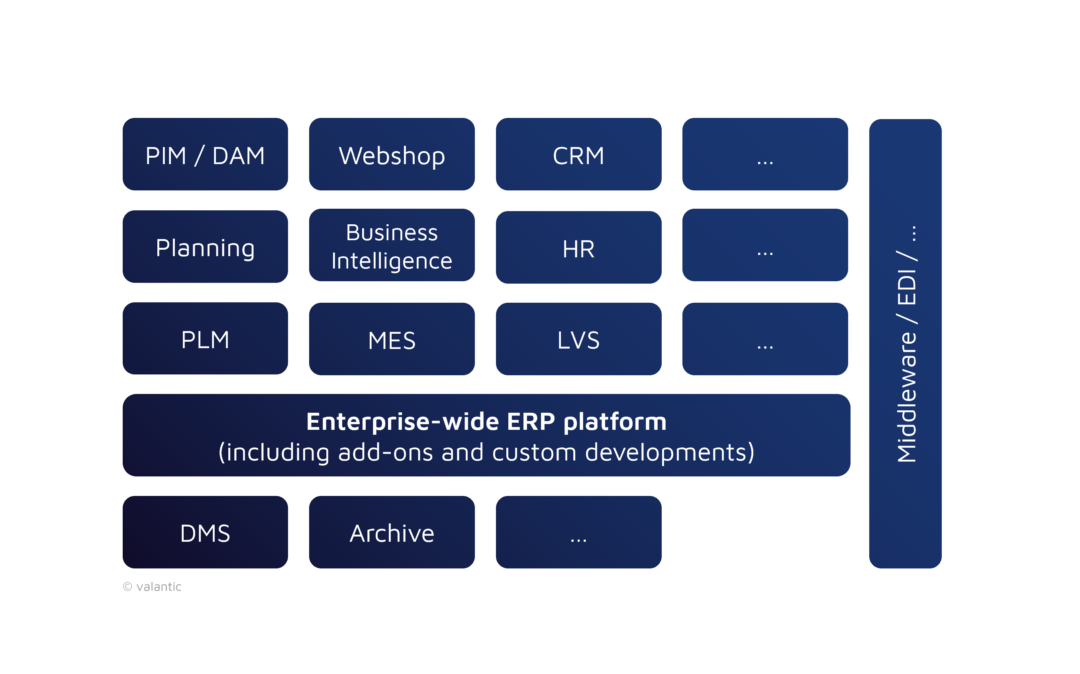

Our approach aims not only to find the right software, but also to develop a customized strategy for our customers’ digital future. We know that choosing standard software is much more than a purchase – it is an investment in the future viability of the company. Our expertise lies in analyzing the specific needs of our customers and identifying the right software solution that creates added value not only today, but also tomorrow. This applies to a wide range of systems used in the company, such as ERP, PIM, CRM or HR systems.

The urgency of making the right decision is exacerbated by the rapid pace of technological development and increasing competitive pressure. A delayed or incorrect selection can lead to considerable competitive disadvantages. That’s why we at valantic rely on a proactive approach – acting instead of reacting. We accompany our customers through the entire process, from requirements analysis to implementation and beyond. In this way, we ensure that the selected software solution is successfully integrated and is sustainable in the long term.
We are convinced that strategic software selection is a key component in securing the future.
Our structuring framework in the context of business transformation
As part of a software selection and implementation project, valantic provides agnostic and objective advice with many years of expertise. In the course of the project, we work with our customers on the relevant topics from the levels of strategy, processes, applications and infrastructure. valantic forms the interface between business, IT and management and ensures the necessary commitment of all stakeholders in the project.

Here, valantic provides top-down consulting from the strategy to the process map to the main and sub-processes – these form the interface to the future implementation partner of the software.
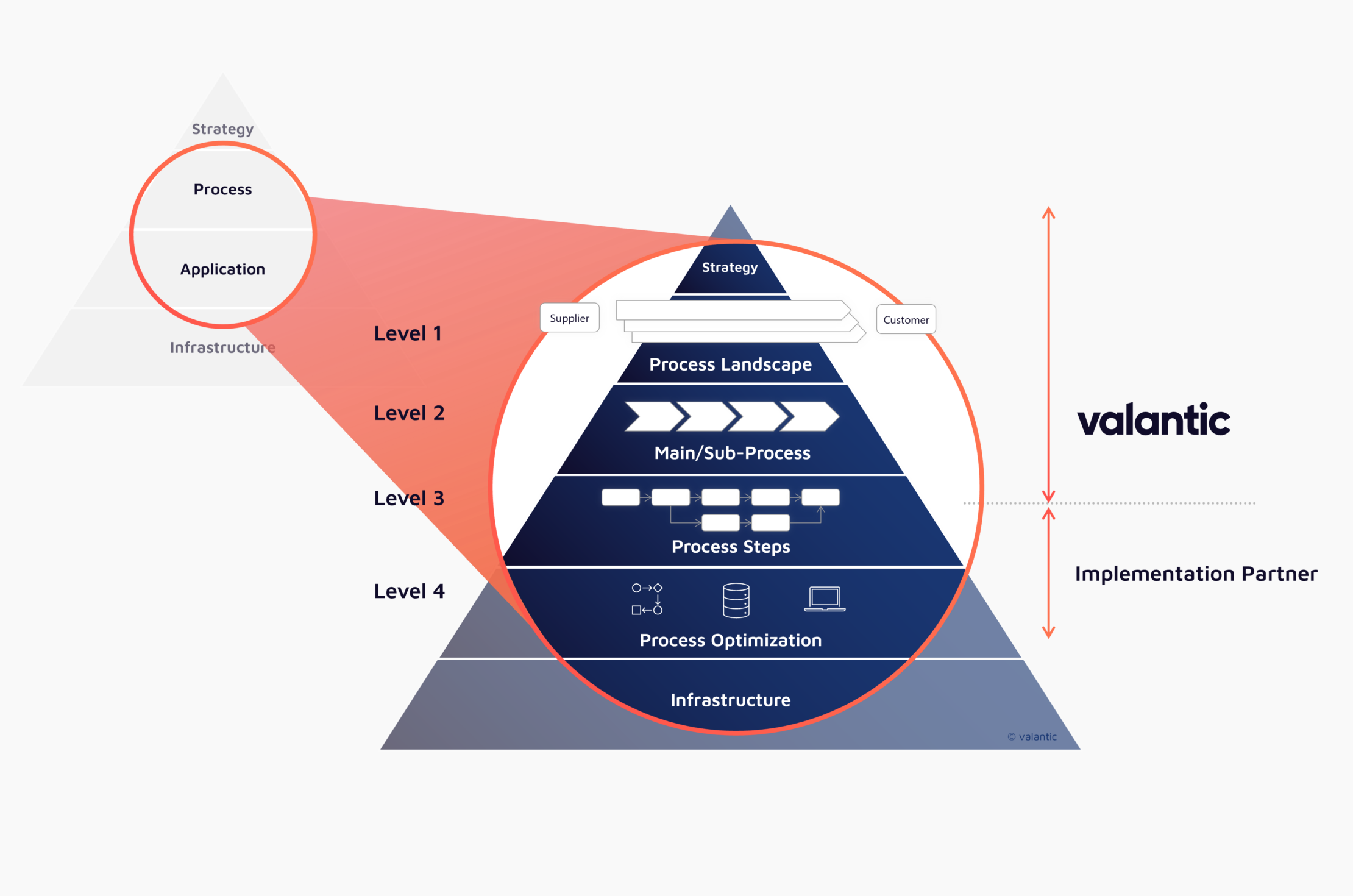
From selection to decision
Our systematic path to the optimal software solution
Software selection is primarily about comparing the specific requirements and solutions of different providers in order to determine the extent to which the software in question meets the company’s requirements.

-
1
Position determination
The first step on the way to a suitable software solution is a careful analysis of the status quo. This includes an evaluation of the existing documents and a holistic assessment of the existing processes as well as the overall and data architecture. Based on the document analysis and/or individual interviews, the most important strategic goals and the central requirements for the project and the solution are then defined.
Results:
- Strategic project goals
- Project requirements based on the business and IT strategy
-
2
Process analysis & catalog of requirements
In a second phase, the business processes are analyzed, from which the requirements definition is derived. Once the advantages and disadvantages of the existing processes have been identified, an optimized target process model is developed. The identified optimization potentials are processed and evaluated in a qualitatively and quantitatively structured manner. Based on this model, the functional requirements for the software are developed, prioritized and recorded in a systematic catalog of requirements.
Results:
- Strengths and weaknesses of the recorded processes
- Qualitative and quantitative optimization potential
- Process house with E2E processes
- Requirements catalog with prioritization
-
3
IT landscape, target architecture & longlist
The aim of the third phase is to create a comprehensive list (so-called longlist) of possible system solutions and suitable providers. To this end, our experts develop various target architecture scenarios that integrate both functional and non-functional requirements. As soon as the desired system landscape has been finalized, the selection process is initiated. Promising solutions and suitable implementation partners are identified in close cooperation with the project managers.
Results:
- Actual and target system landscape
- Longlist
-
4
System and provider comparisons
This is followed by the RfI process (Request for Information), in which the conditions are communicated to the providers, the basic interest is assessed and the general suitability is checked. A self-assessment process is then carried out to select 5-10 systems on the basis of valantic’s strategic orientation and market knowledge. The result of this process is the so-called shortlist. This is followed by the RfP process (Request for Proposal) with the creation, distribution and evaluation of the RfP documents and offers. Use cases are then developed in evaluation workshops and evaluated with the users so that the selection can be narrowed down to around 3-4 systems. The final step is the presentation of the results, including a discussion of the pros and cons, with the final decision being supported by a business case.
Results:
- Dispatch and evaluation of RfI and RfP
- Structured evaluation workshops
-
5
Decision recommendation
In the fifth phase, a well-founded decision paper is prepared that takes into account both the economic and technical aspects of the bids submitted. At the same time, preparatory negotiations on important contractual bases are initiated. The final bidder recommendations are based on a detailed evaluation of various components and criteria.
Results:
- Evaluation of bid options
- Decision template based on proven criteria
-
6
Contract negotiation
Before the implementation phase can begin, a comprehensive contract must be drafted to ensure a balanced distribution of opportunities and risks between the client and the contractor. A framework contract, known as a Service-Level Agreement (SLA), contains the negotiated contract terms and guarantees sustainable protection and transparency of the project. A solid contract structure is essential for the success of any project.
Results:
- Protection of the customer through contractual mechanisms
- Cost certainty
Our industry expertise
Thanks to extensive industry knowledge and expertise from over a hundred projects, valantic has the necessary market and provider insight to find the right solution for you.
Plant and Mechanical Engineering
Automotive
Chemistry
Ports and Freight Transport
Health Care
Industrial Manufacturing
Logistic
Media
Process Manufacturing
Selected references from successful projects

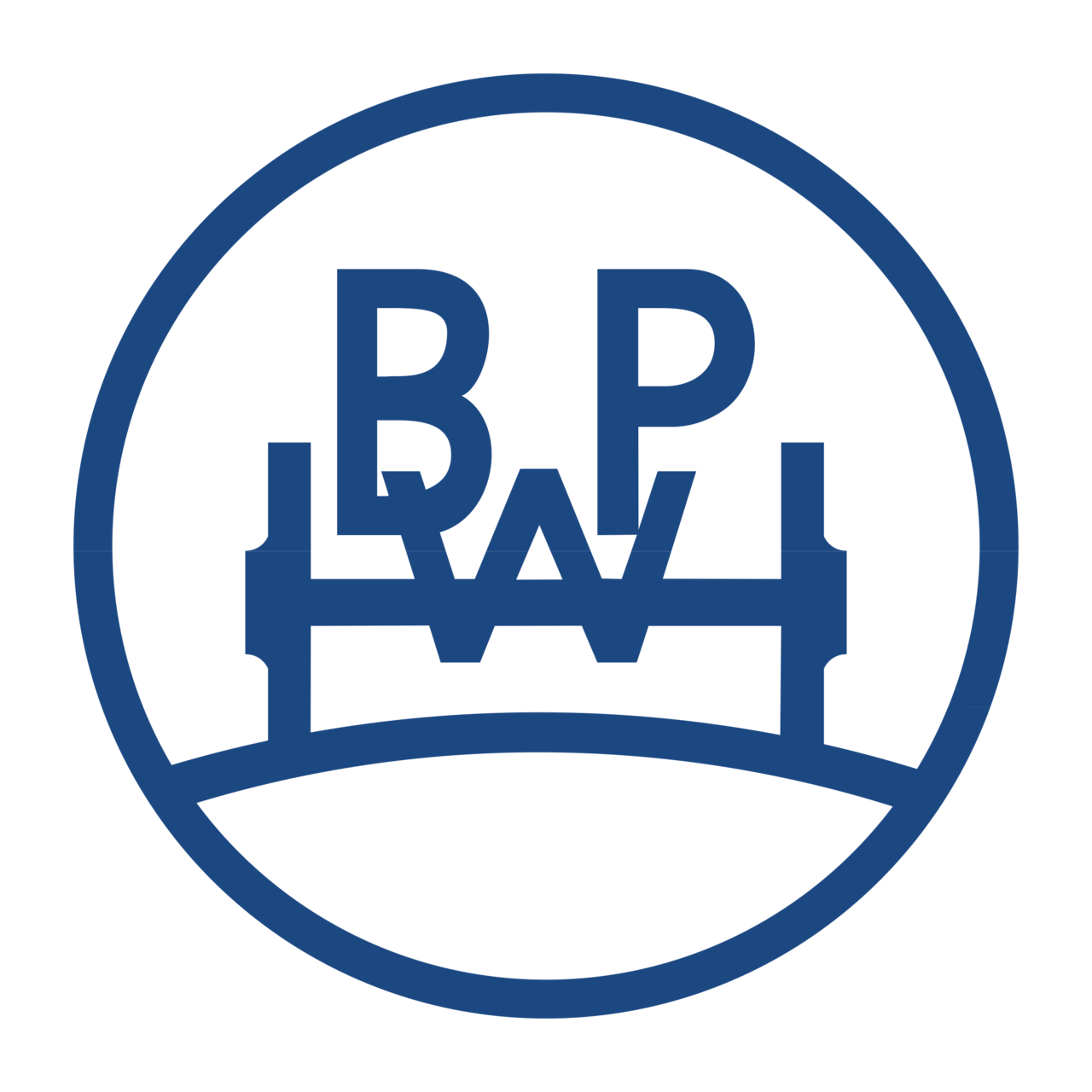

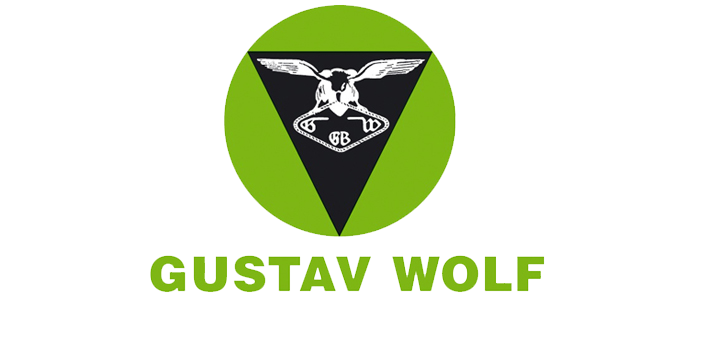

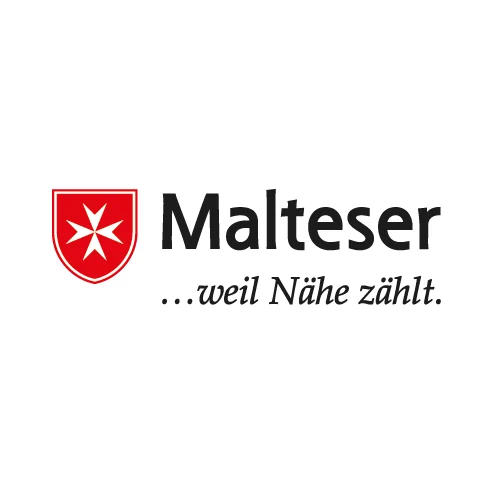

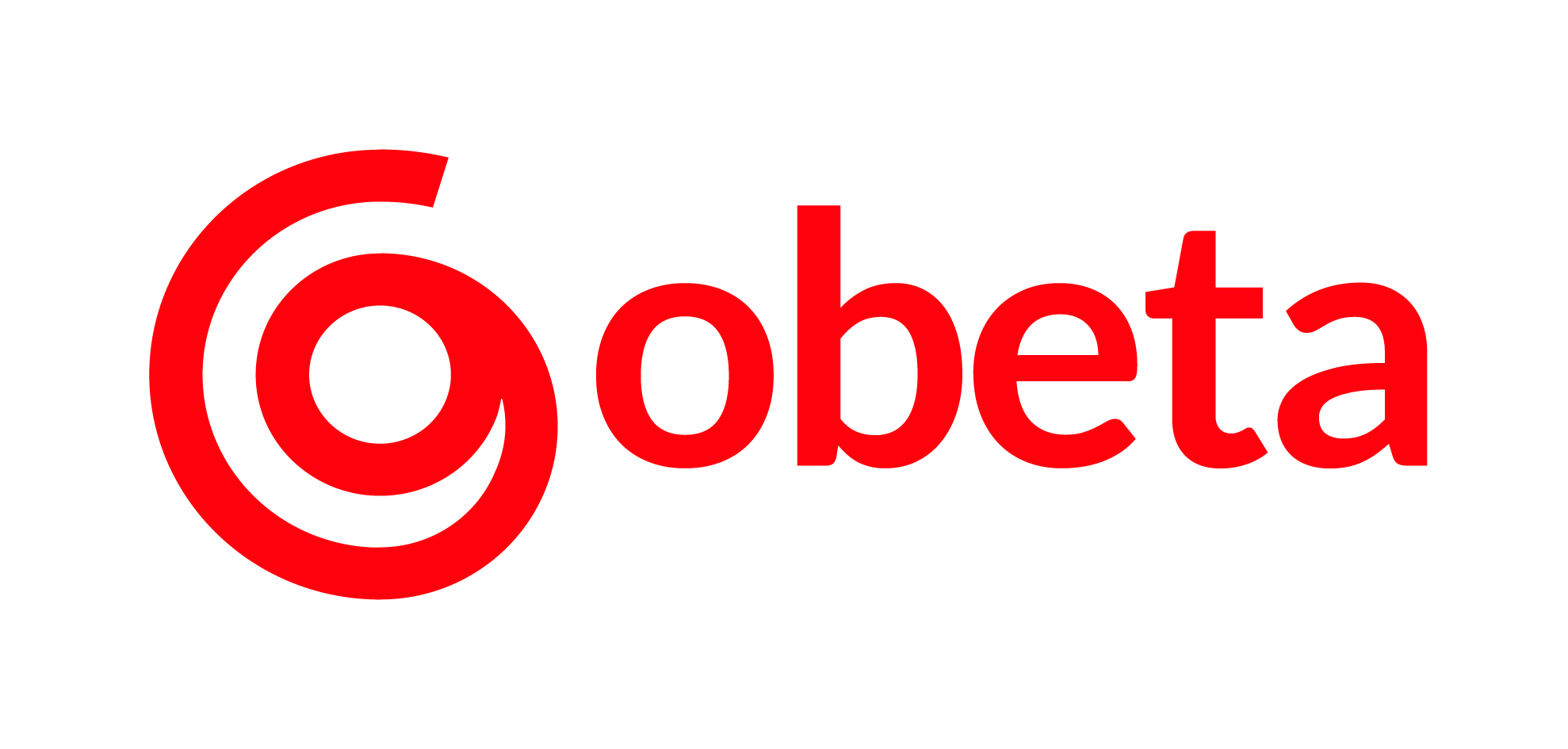
Why work with valantic
Experience from over 100 successful projects
Technology expertise
Market and supplier knowledge
Uncompromising neutrality and independence from suppliers
Pragmatic, process-oriented approach with proven methodology
Suitable profiles for all project roles
Your contact for software selection

Christian Schauß
Director Business Applications
valantic